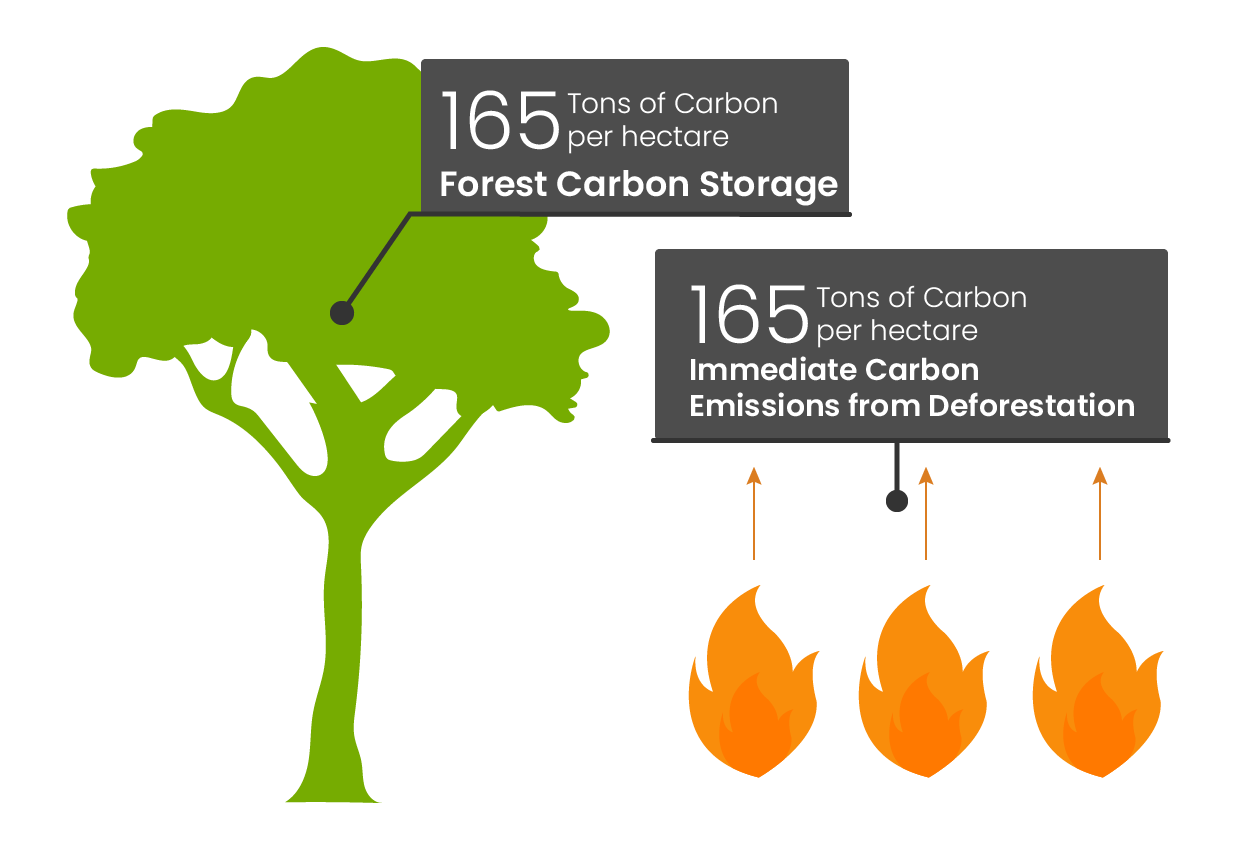
The biomes of the Amazon, Atlantic and Gran Chaco forests, and the Cerrado savannah provide enormous ecological, economic and social benefits locally, regionally, and globally. Their destruction fuels dangerous global climate change, jeopardises food security locally and as far away as the northwest United States, and threatens to undermine local ways of life. It may also reduce soy productivity and create price volatility globally for soy-derived products.
Climate change threatens to uproot communities and undermine livelihoods everywhere on the planet, creating huge economic losses and social disruption, and ultimately loss of life. When vegetation is cleared, enormous amounts of carbon are released, contributing to climate change. Currently, tropical forest loss contributes about 8% of global greenhouse gas emissions. However, maintaining forests and natural habitation is one of the most cost-effective ways to address global climate change. Forests both remove carbon from the atmosphere and store it as organic material, which means preventing deforestation and restoring forests can vastly decrease the greenhouse effect. In fact, if left standing, natural vegetation could contribute to roughly one-fourth of the climate change mitigation needed by 2030 to limit global warming to 2°C. ¹
The Amazon, Atlantic and Gran Chaco forests play an essential role in regulating weather patterns. The Amazon and Atlantic Forests draw water from the Atlantic Ocean and redistribute it as rainfall throughout the region. Destruction of the forests has serious consequences for food security: it contributes to higher average surface temperatures, decreased rainfall, and altered seasonal patterns of rainfall,2 ,3shortening the growing season, and contributing to more frequent droughts and fires. Soy productivity in these regions is likely to be impacted, creating supply shocks and price volatility globally for soy-derived products.4 Deforestation in the Amazon may alter weather patterns and threaten food security throughout the western hemisphere. For example, some models show that deforestation in the Amazon results in a 10%–20% reduction in rainfall for the southern, Midwest, and coastal northwest regions of the United States.5,6,7
Forests and native vegetation are also critical to maintaining healthy water cycles. The Amazon and Atlantic Forests supply substantial amounts of freshwater for human consumption across South America by releasing water vapor from the trees into the atmosphere. Deep-root native vegetation in the Cerrado is key to maintaining underground reservoirs which feed agriculture and help to prevent fires,8 and rivers in the Cerrado power major hydroelectric plants generating electricity and providing drinking water for 32 million people.9
Native habitats are hotspots for biodiversity, housing species that are essential for pollination, seed dispersal, shelter, and other services which support agriculture in the region, as well as large mammals unique to each habitat. When wildlife habitat decreases and becomes fragmented, hundreds of species are threatened with extinction. Mammals that are endangered by ongoing habitat loss in these regions include the jaguar and the giant anteater, and several species of monkeys, deer, and wolves.10,11
Widespread human rights violations and negative impacts on rural communities have also been linked to soy agribusiness throughout the region. In some areas, heavy use and drift of toxic agrochemicals has caused damage to livelihoods (crop damage, death of animals and loss of fruit trees) on smallholdings, contamination of water resources, and serious health problems.12 There have also been reports of invasions of indigenous land by soy farmers as they move into new frontiers, despite legal protections for indigenous lands, reducing access to food sources, and, in some cases, forcing indigenous peoples off their land.13

